Cannabis growing FAQ
Choosing Cannabis Strains: Tips for Successful Cultivation
Published
8 months agoon
By
admin
“Choosing Cannabis Strains: Tips for Successful Cultivation”
In this article you will find answers to following questions: how do I choose cannabis strains?, what are some cannabis cultivation tips? where can I find a strain selection guide? which strains are the best for cultivation? how do I set cultivation goals? what is the importance of understanding cannabis genetics? what are the differences between indoor and outdoor strains?, what should I consider when it comes to strain yield?
In the sprawling world of cannabis cultivation, the vast range of strains available is genuinely mind-boggling. Whether you’ve just decided to buy cannabis seeds for the first time, or you’re a seasoned grower contemplating your next strain, understanding the factors to consider when choosing cannabis strains is a critical step. This guide provides a comprehensive outline of the key considerations to keep in mind, ensuring you make informed decisions about your cannabis growing endeavors.
We start with a fundamental yet often overlooked step: understanding your cultivation goals. Ask yourself, what do you aim to achieve with your cannabis growing? Are you aiming for high yields, specific flavors, or a particular type of effect? Answering these questions is central to the process of strain selection. It’s why we consider “cultivation goal setting” an essential part of choosing the right cannabis seeds.
For instance, you may decide to purchase marijuana seeds to cultivate strains rich in CBD for their potential health benefits. Alternatively, if you’re interested in the recreational aspect, your focus might be on strains with high THC content. Your cultivation goals will influence not only which marijuana seeds you buy but also how you approach the entire cannabis growing process.
Next on the list of cannabis cultivation tips is understanding cannabis genetics. Just as in any form of agriculture, the genetic makeup of the cannabis seeds you choose to plant plays a significant role in the results you achieve. Variations in genetics can result in differences in plant size, growth speed, resistance to diseases, and the quality of the final product. When buying cannabis seeds, it’s crucial to choose reputable suppliers who provide detailed information about the strain’s genetics.
One central aspect of understanding cannabis genetics is the difference between Indica, Sativa, and Hybrid strains. Indica strains, known for their physical sedating effects, typically grow shorter and bushier and have a faster flowering time, making them suitable for indoor cultivation. In contrast, Sativa strains, associated with uplifting cerebral effects, tend to be taller and have a longer flowering period, making them better suited for outdoor cultivation. Hybrid strains offer a combination of both Indica and Sativa traits, allowing growers to benefit from the best characteristics. For marijuana seeds that promote impressive plant growth, you can visit our Cannabis Seeds For Tall Plants page.
This brings us to our next point: deciding between indoor vs outdoor strains. When choosing cannabis strains, consider the growing conditions you can provide. Indoor growing provides controlled conditions, making it ideal for strains that require specific light, temperature, or humidity levels. Outdoor growing is generally cheaper and can produce more substantial yields, but the strains must be hardy and adaptable to your local climate. Therefore, understanding cannabis genetics is vital to select the best strains for cultivation in your specific environment.
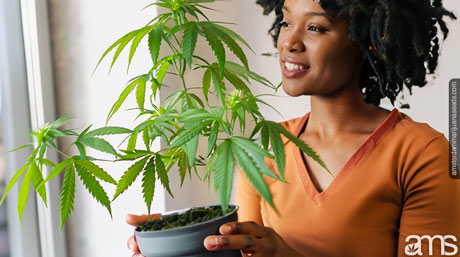
Next up in our cannabis cultivation tips is considering strain yield. Yield refers to the amount of cannabis you can harvest from a plant. When you buy cannabis seeds , pay attention to the estimated yield. However, keep in mind that these are estimates and can be influenced by the growing conditions. Yield is an important consideration, especially for commercial growers, as it directly affects profitability.
It’s not just about how much you can grow, but also the quality of the product. This is where we delve into the world of grower’s strain considerations. The best strains for cultivation are those that not only meet your yield and growth environment requirements but also produce a high-quality product. This includes factors such as potency, flavor, and aroma. These elements are influenced by the strain’s genetics and growing conditions.
Lastly, but certainly not least, is understanding the importance of cannabis growth conditions. Even the best strains for cultivation won’t thrive if their specific growth conditions are not met. This includes factors such as light, temperature, water, nutrients, and pH levels. It’s also worth considering whether you’ll be growing in soil or using a hydroponic system, as this can influence the choice of strains.
In the end, the most crucial factor in choosing the right strain for your cultivation goals is knowledge. Educate yourself about cannabis genetics, growth conditions, and your specific goals for your cannabis growing journey. Take your time, plan, do your research before you buy cannabis seeds, and always aim to improve your growing skills. Remember, the world of cannabis cultivation is full of surprises and challenges, but also great rewards.
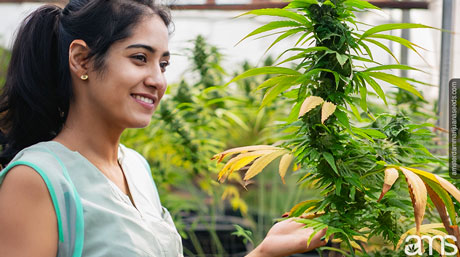
Focusing on the complexity of choosing cannabis strains and delving deeper into the art of cannabis growing. Remember, we are on this journey together, and my aim is to provide you with invaluable insights to aid you in achieving your cultivation goals.
Whether you’re just starting to dip your toes into the world of cannabis growing or you’re a seasoned cultivator, your mission should always be to improve and refine your cultivation techniques. This ties back to our point about cultivation goal setting. Are you growing for personal use, or are you aiming to become a commercial producer? Answering this question is crucial as it directly influences the type of cannabis seeds you should buy.
For example, if you’re growing marijuana for personal use, your top priority may be the strain’s taste and effect. In this case, a strain like the Purple Haze, known for its sweet, earthy flavors and uplifting effects, may be an excellent choice. Conversely, if your goal is commercial cultivation, you’ll likely be more concerned about yield and growth speed. You might want to consider a strain like Critical Mass, renowned for its high yield and quick flowering time.
Now, the concept of strain selection can be daunting, given the plethora of cannabis seeds available on the market. When you’re choosing cannabis strains, it’s crucial to consider the source of your seeds. Buying cannabis seeds from a reputable source ensures that you’re getting what you’re paying for. This is why understanding cannabis genetics and the breeder’s reputation is key to making a wise decision.
From my personal experience in cannabis growing, I’ve found that each strain has its unique “personality.” For example, the Amnesia Haze strain has a reputation for being a bit difficult to grow, especially for beginners. It requires very specific growing conditions, including a warm, sunny climate and a carefully balanced nutrient mix. On the other hand, strains like the Northern Lights are known to be more forgiving and versatile, making them suitable for beginners. Understanding these nuances is vital when choosing cannabis strains.
One of the most fundamental cannabis cultivation tips I can give is to educate yourself about the specific needs of your chosen strain. This involves a deep dive into the world of cannabis growth conditions. A key element of cannabis growing is the delicate balance of light, temperature, humidity, and nutrients. These factors, collectively known as the growing environment, play a significant role in the success of your crop.
Take, for instance, a classic strain like Blue Dream. It is beloved for its balanced full-body relaxation and cerebral inv igoration. Blue Dream prefers a Mediterranean-like climate and requires careful attention to nutrient feeding, but rewards the grower with a high yield.
On the other hand, when it comes to indoor vs outdoor strains, it’s important to consider your available resources and constraints. Indoor cultivation provides you with control over the growth conditions but can be more costly due to the need for lighting, ventilation systems, and more. Outdoor growing is less predictable, as it relies heavily on natural conditions. However, it can also yield more bountiful harvests if the strains chosen are suited to the local climate and conditions. A strain like Durban Poison, for instance, thrives in sunny, outdoor environments and could be an excellent choice for outdoor growers.
Let’s now shift our focus to strain yield considerations. Your chosen strain’s potential yield should align with your cultivation goals. When choosing cannabis strains for commercial cultivation, strains known for their high yield are your best bet. Strains like Big Bud and Critical Kush are known in the cannabis growing community for their impressive yields.
Growing marijuana is an art, a science, and a labor of love. It involves a deep understanding of cannabis genetics, meticulous care in maintaining the right growth conditions, and strategic planning to align with your cultivation goals. Whether you’re a novice grower buying cannabis seeds for the first time or a seasoned cultivator exploring new strains, keeping these considerations in mind will help you choose the right strains for your cultivation goals. And remember, every new growth cycle is an opportunity to learn and refine your cannabis growing techniques.
As we delve further into the complex world of cannabis growing, it’s essential to reiterate the importance of making informed decisions when you buy cannabis seeds. These decisions have a significant impact on the success of your cultivation endeavors, be it for personal or commercial purposes.
Another pivotal factor when choosing cannabis strains is considering the medicinal properties of the strains. If your goal is medicinal marijuana cultivation, focusing on CBD-rich cannabis seeds is the way to go. Strains such as Charlotte’s Web or ACDC, known for their high CBD and low THC content, could be a fantastic choice for those looking to leverage the potential health benefits of cannabis without the psychoactive effects.
It’s important to remember that, similar to other plants, cannabis is subject to diseases and pests. Different strains have varying levels of resistance to these threats, which is another key aspect of understanding cannabis genetics. For instance, some cannabis seeds are bred to resist mold and mildew, like the Super Silver Haze strain. Grower’s strain considerations like these are vital to ensure a healthy, thriving crop.
Moreover, your growing marijuana experience can also be influenced by the length of the strain’s flowering period. In the realm of cannabis cultivation, time is money, particularly for commercial growers. Strains with short flowering times allow for more harvests within the same timeframe. The Indica-dominant strain, Afghan Kush, for instance, has a relatively short flowering time of about 7-8 weeks.
As we dive deeper into cannabis cultivation tips, let’s talk about something that’s often overlooked by novice growers: plant training techniques. Techniques like Low-Stress Training (LST), High-Stress Training (HST), Screen of Green (SCROG), and Sea of Green (SOG) can significantly improve the yield and overall health of your plants. They work by exposing more of the plant’s surface area to light, leading to more vigorous growth.
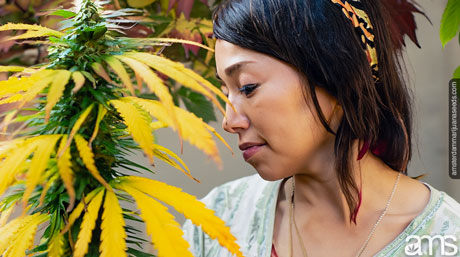
Indoor vs outdoor strains have different preferences when it comes to their growing environment. As mentioned earlier, choosing between indoor and outdoor cultivation depends on the resources at your disposal and the specific needs of the strains you’re growing.
For example, growing marijuana outdoors often results in larger plants, as the plants have more room to stretch out and grow. Strains like the Sativa-dominant Amnesia Trance are well-suited for outdoor cultivation, given their preference for plenty of sunshine and their resilience to environmental changes.
On the other hand, indoor growing offers a higher degree of control over the environment. This control can lead to a more consistent, high-quality product but also requires a more hands-on approach. The Indica-dominant strain, White Widow, is known to thrive in indoor environments, making it a popular choice for indoor cultivators.
A deep understanding of cannabis growth conditions is necessary to successfully grow marijuana, whether indoors or outdoors. Ensuring that your plants have the correct balance of light, temperature, humidity, and nutrients can make the difference between a bountiful harvest and a disappointing yield.
Finally, never underestimate the importance of patience and continual learning in the world of cannabis cultivation. Growing marijuana is a journey that requires a lot of trial and error. But remember, each challenge presents an opportunity to learn and grow as a cultivator.
When you buy cannabis seeds and start your growing journey, you’re not just growing plants; you’re cultivating skills, knowledge, and patience. Keep learning, keep experimenting, and remember to enjoy the process.
Continuing on our exploration of cannabis growing, we now turn to some advanced tips and techniques that can help fine-tune your cultivation process and further optimize your results. Remember, when you are looking to buy cannabis seeds, it is essential to consider not just the strain’s characteristics but also your own cultivation capabilities and goals.

One of the most critical cannabis cultivation tips I can share is the importance of the vegetative and flowering stages in cannabis growth. Each stage has unique nutrient requirements, and understanding these can significantly impact the health and yield of your plants.
During the vegetative stage, cannabis plants require high levels of nitrogen and ample amounts of phosphorous and potassium. This stage is all about green, leafy growth and developing a robust plant structure. Strains like the Super Skunk are known for their vigorous vegetative growth, making them a great choice for growers wanting a short growth cycle.
As your plants transition into the flowering stage, the nutrient needs shift. High levels of phosphorous and potassium, along with lower amounts of nitrogen, are needed to support bud development. Strains like the Haze Berry are known for their abundant and flavorful buds when provided with the right nutrients during the flowering stage.
One must also consider strain yield considerations. The yield of a cannabis strain is the weight of the dried flowers that the plant produces. Some strains, like the renowned Critical, are bred specifically for high yield production and can produce an impressive amount of high-quality bud. However, remember that a high-yielding strain also requires careful management and the right growth conditions to achieve its full potential.
The topic of indoor vs outdoor strains comes up frequently in the context of yield, as the growing environment can significantly influence the yield of a cannabis plant. Indoor growers often use techniques like plant training and specialized lighting schedules to maximize their yield. Growing marijuana outdoors, in contrast, allows the plants to take advantage of natural sunlight and potentially grow into much larger plants, potentially offering a larger yield.
A significant part of cannabis growing involves managing potential threats to your plants, like pests and diseases. Strains differ in their resistance to these challenges, so it’s wise to consider these factors when choosing cannabis strains. For example, the Gorilla Glue strain has a reputation for its resistance to pests, while the Pineapple Express strain is known for its resistance to diseases.
One of the often overlooked cannabis cultivation tips involves the harvest time. The harvest time can significantly influence the effects of your cannabis. Harvesting earlier can result in a more uplifting effect, while harvesting later can lead to a more relaxing effect. Understanding the desired effects can guide your harvest decisions.
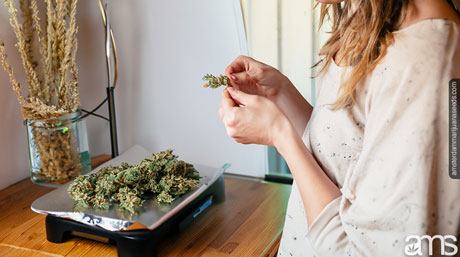
In conclusion, the art of growing marijuana involves a series of critical decisions, starting from the moment you buy cannabis seeds, all the way to harvest. Every step along the way presents opportunities to optimize your results and achieve your cultivation goals. So keep these considerations in mind, continue to expand your understanding of cannabis genetics and growth conditions, and enjoy the rewarding journey that is cannabis cultivation.
In this final section of our comprehensive guide on choosing the right strain for your cultivation goals, we focus on the post-harvest considerations. From curing to storing your cannabis, each step plays a crucial role in preserving the quality and potency of your yield. When you set out to buy cannabis seeds, remember that the journey doesn’t end with harvesting.
After harvesting, curing is the next critical step. Curing your cannabis properly can significantly enhance its flavor and potency and also helps to prevent the growth of mold during storage. For strains like the Afgooey, which are known for their unique, complex flavors, proper curing can make all the difference.
When it comes to storing your cannabis, an airtight container in a cool, dark, and dry place is the best way to maintain its quality over time. Excessive heat and light can degrade cannabinoids and terpenes, leading to a loss in potency and flavor. Therefore, even for the best strains for cultivation, poor storage can result in an inferior product.
Moreover, you must always bear in mind the legal considerations associated with cannabis cultivation. Legal parameters can vary widely depending on your location, so always ensure you are compliant with local laws and regulations when you set out to buy cannabis seeds or engage in cannabis growing.
Lastly, always remember that every grower’s journey is unique. Your choice when buying cannabis seeds should align with your personal cultivation goals, resources, and preferences. From understanding cannabis genetics to choosing between indoor vs outdoor strains, to considering strain yield considerations, your path in the world of cannabis cultivation will be an exciting journey of learning and discovery.
Now, with a multitude of cannabis cultivation tips at your fingertips, you are better equipped to make informed decisions about your cannabis growing endeavors. You can navigate the nuances of choosing cannabis strains, understand your grower’s strain considerations, and anticipate the growth conditions required for thriving plants.
In summary, growing marijuana is both a science and an art, full of opportunities for personal growth and exploration. So, take your time, do your research, and make sure you enjoy the process. Whether you are a seasoned grower looking to refine your techniques, or a novice eager to delve into the world of cannabis cultivation, remember that success often comes through trial, error, and, most importantly, patience.
Thank you for joining me on this journey, and I hope this guide has been enlightening and helpful in achieving your cultivation goals. Good luck, and happy growing!
You may like
-


Minnesota: Ishkode cannabis dispensary is now open at Vermilion
-


Ohio House Republicans’ cannabis measure a ‘slap in face,’ NORML says
-


Save 30% all month long at The Dispensary Fulton
-


Ohioans activate to defend weed legalization from lawmakers
-


It All Turned A Bit Bogan At Aussie Medical Cannabis Symposium
-


Building cannabis brands that reach across markets
Cannabis growing FAQ
Effective Techniques Preventing Controlling Fungus Mold
Published
6 months agoon
September 19, 2024By
admin
As a passionate cultivator of cannabis and an expert in the field, I’m eager to share my wealth of knowledge about one of the most critical aspects of cannabis growing – preventing and controlling fungus and mold. Whether you’re about to buy cannabis seeds for the first time or you’re an experienced grower, I guarantee this comprehensive guide will arm you with valuable insights to maintain your garden’s health and vitality.
So, let’s dive in and learn the tricks of the trade to keep those annoying fungal infections at bay.
Part 1: The Basics – Identifying Fungal Threats in Cannabis Growing
Before you can start preventing mold and fungus, it’s important to understand what you’re dealing with. When you buy cannabis seeds, you’re purchasing a promise of future growth. But like all living things, your cannabis plants are vulnerable to a range of fungal infections, including root fungus cannabis, black spot fungus, leaf fungus cannabis, and the dreaded powdery mildew fungus marijuana. Each of these pathogens can have detrimental effects on your marijuana seeds’ germination and overall plant health.
For instance, root fungus cannabis can lead to root rot, while black spot fungus creates small, dark spots on your cannabis leaves. Similarly, leaf fungus cannabis is characterized by browning and dying leaves, while powdery mildew fungus marijuana appears as a white, powdery substance on your plant’s leaves, stems, and buds.

Part 2: Preventing Fungus – An Ounce of Prevention Is Worth a Pound of Cure
Prevention is always the first line of defense. The key to preventing fungus in your cannabis growing process is maintaining optimal growing conditions and practicing good hygiene.
Firstly, always buy cannabis seeds from reliable sources to ensure they are disease-free. When sowing your marijuana seeds , it’s critical to use sterilized soil and pots. Remember to maintain a suitable pH level in the soil, between 6.0 and 7.0, as this can help prevent root fungus cannabis. Proper aeration and drainage are also vital in avoiding waterlogging, a condition that encourages fungal growth.
Regulating your growing environment’s temperature and humidity is another crucial factor in preventing mold. High humidity coupled with warm temperatures can provide the perfect environment for mold and fungus to thrive. Keep your humidity levels below 50% during the flowering stage to prevent issues like leaf fungus cannabis and black spot fungus.
Also, be mindful of overcrowding your plants as this can restrict airflow and create a damp environment conducive to fungal growth. Finally, the use of anti-fungal sprays can aid in fungus prevention, making your cannabis growing experience a fruitful one.

Part 3: How to Control Fungus in Soil and Your Cultivation Space
A crucial aspect of preventing fungus lies in the question, ‘How to control fungus in soil?’. This is where a good compost tea can come into play, by boosting beneficial bacteria in the soil that help keep fungal spores at bay.
Likewise, for controlling mold, regular inspections are vital. Examine your plants frequently for signs of mold at the early stages of growth. If you detect mold, prune the affected areas immediately to prevent further spread. Proper ventilation is also key in mold control cannabis. Fans, filters, and exhaust systems can help to keep air circulating and prevent moisture buildup.
Remember, fungus and mold thrive in damp, poorly lit areas. Therefore, ensure that your growing space is well-lit and adequately ventilated to maintain a healthy environment for your cannabis plants.
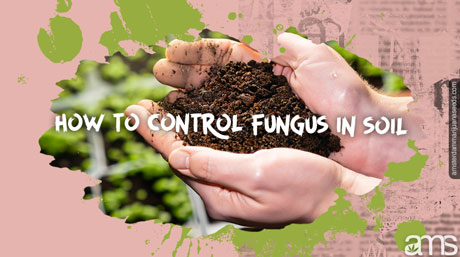
Part 4: Dealing with the Unavoidable – Treatments for Fungal Infections
Despite your best efforts, you might still encounter a fungal issue. Don’t fret! There are several methods for treating and controlling mold and fungus.
Fungicides can be helpful in combating these pests. Neem oil is a natural, safe choice that can effectively tackle powdery mildew fungus marijuana. Similarly, a baking soda and water mixture can be used as a homemade fungicide to treat black spot fungus and leaf fungus cannabis.
For a more serious infection like root fungus cannabis, you might need to resort to systemic fungicides or even consider repotting your plants in fresh, sterilized soil.
Regardless of the method you choose, remember to act quickly and decisively. Timely intervention is key in how to prevent a fungal infection from spreading and causing more damage.
To sum up, cannabis cultivation, whether from marijuana seeds or cuttings, is a rewarding endeavor that requires attention to detail, passion, and a fair share of knowledge on preventing fungus and mold. By keeping these pointers in mind, you can navigate the most common fungal threats, ensuring your cannabis growing endeavor remains as healthy and productive as possible.
Through learning how to control fungus in soil, practicing rigorous mold control cannabis, and always keeping an eye out for potential issues, you’re set on the path of successful cannabis cultivation. Now, whether you’re about to buy cannabis seeds or are already waist-deep in the throes of cannabis growing, you’re equipped to prevent, control, and treat any potential fungal hazards, making your journey in growing marijuana as smooth as possible.
FREQUENTLY ASKED QUESTIONS:
1. What are the common fungal threats in cannabis growing?
Common fungal threats include root fungus, black spot fungus, leaf fungus, and powdery mildew. Each can cause serious damage to your plants, so early identification and prevention are key.
2. How can I prevent mold and fungus in my cannabis garden?
Maintain optimal growing conditions by keeping humidity levels below 50%, ensuring good ventilation, and avoiding overcrowding. Use sterilized soil and pots, and always buy seeds from reliable sources.
3. What should I do if I detect fungus or mold on my cannabis plants?
Act quickly by pruning affected areas and applying natural fungicides like neem oil or a baking soda mixture. For severe root infections, consider using systemic fungicides or repotting in fresh, sterilized soil.
Cannabis growing FAQ
Environmental Factors Impact Cannabis Plants
Published
6 months agoon
September 19, 2024By
admin
In this article you will find answers to following questions: How does temperature affect cannabis plants?, What are the effects of light stress on marijuana cultivation?, Why is it essential to control humidity for cannabis plant health?, What are some environmental factors impacting marijuana plants?, How can you mitigate the impact of temperature on cannabis cultivation?, What methods can be used to manage humidity for better marijuana growth?, Why is understanding environmental factors crucial for cannabis cultivation?, How does light stress influence marijuana plant health?, What are some ways to regulate temperature during cannabis growth?, How do environmental factors affect the overall health of marijuana plants?
Understanding the Environmental Factors Affecting Cannabis Cultivation
As a passionate marijuana grower, you know that cultivating healthy and thriving cannabis plants requires more than just planting seeds and watering them. Environmental factors play a crucial role in the success of your marijuana cultivation endeavors. In this comprehensive guide, we will explore the various environmental challenges cannabis plants face, such as temperature, humidity, and light stress, and how you can effectively mitigate their effects.
1. Marijuana seeds – The Foundation of Your Growth
To embark on a successful cannabis cultivation journey, the first step is acquiring high-quality cannabis seeds. When you buy marijuana seeds, make sure to choose a reputable source that offers a wide variety of strains to suit your preferences and growing conditions. Whether you’re looking for auto-flowering, feminized, or regular cannabis seeds , do thorough research to ensure you are investing in premium genetics.
2. Cannabis Temperature – Striking the Right Balance
Temperature regulation is one of the most critical factors that can significantly impact cannabis plants. These green beauties thrive in a specific temperature range, ideally between 20°C to 30°C (68°F to 86°F) during the light period, and slightly cooler temperatures, around 18°C to 24°C (64°F to 75°F) during the dark period. Fluctuations outside this range can result in adverse effects on growth, flowering, and overall plant health.
During the colder months, consider using heaters to maintain the desired temperature range in your grow room. Conversely, for hot summer days, invest in ventilation systems or air conditioning to prevent the plants from becoming stressed due to excessive heat.
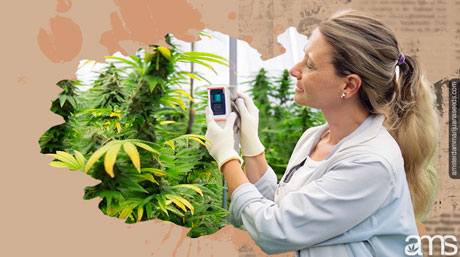
3. Humidity Control – The Key to Preventing Mold and Mildew
Humidity management is another vital aspect of marijuana cultivation. High humidity levels can lead to mold and mildew issues, which can be devastating for your plants. On the other hand, low humidity levels can cause stress, slow growth, and negatively impact the yield.
For the vegetative phase, maintain humidity levels between 40% to 70%. As the plants enter the flowering phase, gradually reduce humidity to around 40% to 50% to prevent mold development in the dense buds.
To maintain optimal humidity levels, use humidifiers or dehumidifiers as necessary. Additionally, proper airflow in the grow room will aid in regulating humidity levels and minimize the risk of mold and mildew.
4. Light Stress Effects – Striving for the Perfect Balance
Light stress can have both positive and negative effects on cannabis plants, depending on how it is managed. Adequate light is essential for robust growth and high-quality yields. However, too much light, especially during the flowering phase, can lead to light stress and hermaphroditism.
During the vegetative phase, marijuana plants thrive under 18 to 24 hours of light per day. Once they enter the flowering phase, reduce the light exposure to 12 hours per day to trigger bud development. Ensure a consistent light schedule, as any interruptions can cause stress and negatively affect your plants.
If you are growing outdoors, be mindful of natural light sources, such as streetlights or security lights, which can disturb the dark period for your plants. Consider using blackout curtains or light-blocking materials to maintain a strict light schedule.

Mitigating Environmental Stress for Healthy Cannabis Plants
Creating an optimal growing environment is fundamental to mitigating environmental stress and fostering healthy marijuana plants. Investing in a well-insulated and properly sealed grow room allows you to have better control over temperature, humidity, and light exposure.
Additionally, consider using reflective materials such as Mylar or white paint on the walls of your grow room to ensure maximum light penetration and distribution. A reflective surface can enhance the efficiency of your grow lights, allowing your plants to receive more usable light.
Temperature and Humidity Monitoring
Maintaining the optimal temperature and humidity levels can be achieved through diligent monitoring. Use thermometers and hygrometers to regularly check the conditions in your grow room. Many modern monitoring systems even allow remote access, enabling you to keep an eye on your plants from anywhere.
With this data at hand, you can quickly identify any deviations and make necessary adjustments to keep your cannabis plants in the comfort zone.
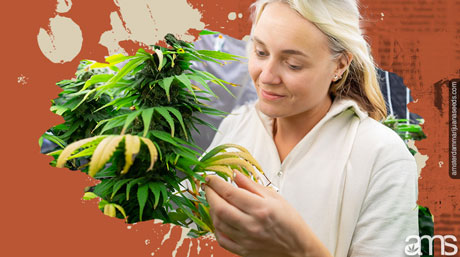
Proper Ventilation and Airflow
Adequate ventilation and airflow are vital for a healthy marijuana garden. A well-ventilated grow room not only helps regulate temperature and humidity but also provides plants with fresh CO2, which is essential for photosynthesis.
Install exhaust fans to expel hot and stale air, and intake fans to bring in fresh air. Place fans strategically to ensure even distribution of air throughout the grow room. Creating a gentle breeze helps strengthen the plants’ stems and prevents stagnant air that could promote mold growth.
Light Stress Management
To minimize light stress, choose the right type of grow lights for your marijuana plants. LEDs, HPS, and CMH lights are popular choices for indoor growers. Each light type has its advantages and disadvantages, so do your research and select the best option based on your specific needs and budget.
During the flowering phase, remember to keep your grow room as dark as possible during the 12-hour dark period. Light leaks can cause stress and interrupt the plants’ natural light cycle, potentially leading to reduced yields and compromised quality.
Nurturing Your Cannabis Plants for Optimal Growth
Proper watering is crucial for healthy marijuana plants. Overwatering can lead to root rot and other moisture-related issues, while underwatering can cause the plants to wilt and suffer nutrient deficiencies.
Water your plants when the top inch of the soil feels dry to the touch. Use your fingers to gauge the moisture level and adjust your watering schedule accordingly. Cannabis plants generally prefer a slightly acidic pH level, around 6.0 to 6.5, in the soil or growing medium.

Nutrient Management
Marijuana plants require a balanced nutrient regimen to thrive. Provide the necessary macro and micronutrients through well-formulated fertilizers. Nutrient deficiencies or excesses can lead to various issues, including stunted growth and nutrient lockout.
Pay attention to the specific nutrient needs of your plants during different growth stages. For example, during the vegetative phase, they require higher levels of nitrogen to support leafy growth, while the flowering phase requires a shift to higher phosphorus and potassium levels to support bud development.
Training and Pruning
Pruning and training techniques can help improve light distribution within the canopy, leading to better overall growth and bud development. Topping, FIMing, and LST (Low-Stress Training) are common methods used by growers to encourage bushier plants and maximize light exposure to lower bud sites.
Pests and Disease Prevention
Keep a close eye on your marijuana plants for any signs of pests or diseases. Early detection is essential to prevent infestations from spreading and causing significant damage to your crops. Use organic pest control methods whenever possible to minimize the use of harmful chemicals.
Additionally, maintain a clean and sanitized grow room to reduce the risk of pests and diseases taking hold. Regularly inspect your plants and surrounding areas, and promptly address any issues you may encounter.
The Satisfying Rewards of Expert Cannabis Cultivation
Congratulations, you’ve now equipped yourself with the knowledge to successfully navigate the challenges posed by environmental factors when growing marijuana. By maintaining optimal temperature and humidity, managing light stress, and providing the right care, you can ensure healthy and thriving cannabis plants that will reward you with bountiful harvests. Happy growing!
FAQ
1. How does temperature affect cannabis plants? Temperature plays a crucial role in the growth and health of cannabis plants. Ideal temperatures range between 20°C to 30°C (68°F to 86°F) during light periods and slightly cooler, 18°C to 24°C (64°F to 75°F), during dark periods. Deviations can harm plant growth, affect flowering, and lead to stress. Maintaining proper temperature is key to healthy cultivation.
2. Why is humidity control important in cannabis cultivation? Managing humidity is essential to prevent issues like mold, mildew, and slow growth. Cannabis plants need different humidity levels in their vegetative and flowering stages, with ideal ranges of 40-70% in vegetative and 40-50% during flowering. Proper control promotes better yields and overall plant health.
3. What are the effects of light stress on cannabis plants? Light stress can either enhance or harm cannabis plants, depending on how it is managed. Excess light exposure can lead to stress, especially in the flowering phase, while insufficient light hinders growth. Regulating light exposure is critical to ensuring healthy development and avoiding problems like hermaphroditism.
Cannabis growing FAQ
Essential Elements Create A Optimal Environment
Published
6 months agoon
September 19, 2024By
admin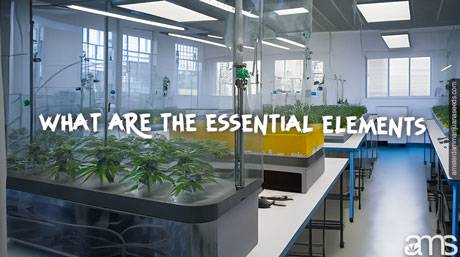
In this article you will find answers to following questions: what are the germination essential elements?, what constitutes a suitable germination environment?, what are the key seed germination factors?, what are the optimal germination conditions?, what is the ideal germination temperature range?, what are the marijuana seeds moisture requirements for germination?, what are the specific light needs during germination?, how does soil composition affect germination?, what are some cannabis seed germination tips?, what are some successful germination strategies?
Hello fellow enthusiasts, welcome back to our deep dive into the art of cannabis cultivation. If you’re here, you’re likely pondering about the mysterious journey from a single seed to a thriving plant, specifically the pivotal phase of germination. After all, as our humble cannabis growing experience has taught us, germination sets the foundation for a healthy and successful harvest. Today, we’re focusing on the core aspects that make up the optimal germination conditions, and how to maneuver through the unique challenges of this critical phase.
Perhaps you’ve decided to buy cannabis seeds for the first time, or you’re an experienced cultivator seeking to maximize your yield. Regardless, understanding the germination essential elements is the first stepping stone in your cannabis growing endeavor. Whether you’re working with marijuana seeds, the underlying principles of germination remain the same.

Acquiring Quality Seeds
Before you even contemplate creating the suitable germination environment, it is essential to source high-quality cannabis seeds. The importance of using top-notch seeds cannot be understated; it’s the foundation of your cannabis growing adventure.
Be selective when you buy cannabis seeds. Look for mature seeds with a hard outer shell, typically dark brown with lighter accents. Immature seeds are generally green or white, and while they may still germinate, they will likely struggle in the early stages of growth, leading to a subpar yield.
The Perfect Temperature
In establishing the optimal germination conditions, understanding the right germination temperature range is pivotal. Your cannabis seeds, just like all seeds, are biologically programmed to sprout under particular environmental conditions. In nature, this typically occurs in spring when the soil warms up.
Maintaining a germination temperature range of 70-85°F (20-30°C) is ideal. This range mimics the warmth of spring and triggers the seeds to germinate. Keep a close eye on your temperature, ensuring it stays within this range. Too cold, and the seeds will remain dormant; too hot, and the seeds might get damaged.

The Right Amount of Moisture
Another essential aspect of creating a suitable germination environment is managing seed moisture requirements. Seeds require a moist environment to sprout, as the water softens the hard outer shell and triggers the growth of the radicle (the embryonic root).
Ensure your medium remains moist but not waterlogged, as this could lead to fungal issues and waterlogging. Mist your cannabis seeds with a spray bottle if you find the medium drying out too quickly. Remember, the goal is to mimic nature’s moist spring soil, not a swamp.
Light Levels
While the role of light in the germination process may seem secondary, understanding germination light needs is a crucial aspect of successful germination strategies. Most seeds, including cannabis seeds , need a certain light spectrum to trigger growth after the germination process has started.
After sprouting, your cannabis seedlings require plenty of light to grow strong and healthy. Keep them under a suitable light source, such as full spectrum LED lights, ensuring they get 16-18 hours of light per day.
Soil Composition
Your choice of growth medium can drastically impact your germination success. Let’s explore the role of soil composition in germination.
Soil provides a nurturing environment for your cannabis seeds, packed with the nutrients they need to sprout. A light, well-aerated soil with good drainage is ideal for cannabis growing. This sort of composition facilitates optimal root development and ensures your seedlings don’t become waterlogged.
Consider using a soil mix specifically formulated for seed germination. This type of mix generally contains peat moss or coconut coir, perlite or vermiculite, and sometimes a bit of slow-release granular fertilizer.

Seed Germination Tips
Armed with the knowledge of these seed germination factors, you’re well on your way to mastering the art of cannabis growing. But let’s dive a bit deeper with some more specific seed germination tips.
Firstly, always handle your seeds gently to avoid causing any damage. Use a pair of tweezers if necessary. Secondly, consider soaking your cannabis seeds in a glass of distilled water for 12-24 hours before planting them. This can help soften the outer shell and kickstart germination.
Refining your Approach
Creating the ideal conditions for your cannabis seeds to germinate is part art, part science. As you continue to refine your successful germination strategies, remember that each seed is unique and might require slightly different conditions to sprout. Be patient, observe carefully, and adjust your approach as necessary.
In conclusion, the magic of turning cannabis seeds into a thriving plant lies in a deep understanding of the germination essential elements and the ability to provide them consistently. This intricate dance with nature can indeed be challenging, but the rewards are beyond satisfying.
Remember, even the most seasoned cannabis cultivators are always learning and experimenting. So whether you’re about to buy cannabis seeds for the first time or you’re an experienced hand at cannabis growing, keep pushing the boundaries of your knowledge, and happy growing!
FAQ
1. What are the key factors for successful cannabis seed germination?
Successful cannabis seed germination requires the right temperature, moisture, light, and soil composition. Ensuring a stable environment with temperatures between 70-85°F (20-30°C), proper moisture, and light exposure is essential for healthy sprouting.
2. What is the ideal temperature range for germinating cannabis seeds?
The optimal temperature range for cannabis seed germination is 70-85°F (20-30°C). This warmth mimics natural spring conditions, promoting seed sprouting and healthy growth.
3. How does soil composition affect cannabis seed germination?
A well-aerated, nutrient-rich, and well-draining soil mix is crucial for cannabis seed germination. Using a mix that includes materials like peat moss, perlite, or coconut coir helps provide a supportive environment for root development and prevents waterlogging.

Minnesota: Ishkode cannabis dispensary is now open at Vermilion

Ohio House Republicans’ cannabis measure a ‘slap in face,’ NORML says

Save 30% all month long at The Dispensary Fulton

Ohioans activate to defend weed legalization from lawmakers

It All Turned A Bit Bogan At Aussie Medical Cannabis Symposium

Building cannabis brands that reach across markets

ILGM’s Home Grow Tour 2025

Should Medical Marijuana Be Allowed in Worker’s Comp Claims?

Karma Koala Podcast 238: Daniel Shortt Launches New Firm With Partner Perry Salzhauer In Pacific NW
Trump invites former cannabis prisoner to speech, but doesn’t mention cannabis (Newsletter: February 5, 2025)

Distressed Cannabis Business Takeaways – Canna Law Blog™

United States: Alex Malyshev And Melinda Fellner Discuss The Intersection Of Tax And Cannabis In New Video Series – Part VI: Licensing (Video)

What you Need to Know

Drug Testing for Marijuana – The Joint Blog

NCIA Write About Their Equity Scholarship Program

It has been a wild news week – here’s how CBD and weed can help you relax

Cannabis, alcohol firm SNDL loses CA$372.4 million in 2022

A new April 20 cannabis contest includes a $40,000 purse

Your Go-To Source for Cannabis Logos and Designs

UArizona launches online cannabis compliance online course
Trending
-

 Cannabis News2 years ago
Cannabis News2 years agoDistressed Cannabis Business Takeaways – Canna Law Blog™
-

 One-Hit Wonders2 years ago
One-Hit Wonders2 years agoUnited States: Alex Malyshev And Melinda Fellner Discuss The Intersection Of Tax And Cannabis In New Video Series – Part VI: Licensing (Video)
-

 Cannabis 1012 years ago
Cannabis 1012 years agoWhat you Need to Know
-

 drug testing1 year ago
drug testing1 year agoDrug Testing for Marijuana – The Joint Blog
-

 Education2 years ago
Education2 years agoNCIA Write About Their Equity Scholarship Program
-

 Cannabis2 years ago
Cannabis2 years agoIt has been a wild news week – here’s how CBD and weed can help you relax
-

 Marijuana Business Daily2 years ago
Marijuana Business Daily2 years agoCannabis, alcohol firm SNDL loses CA$372.4 million in 2022
-

 California2 years ago
California2 years agoA new April 20 cannabis contest includes a $40,000 purse



